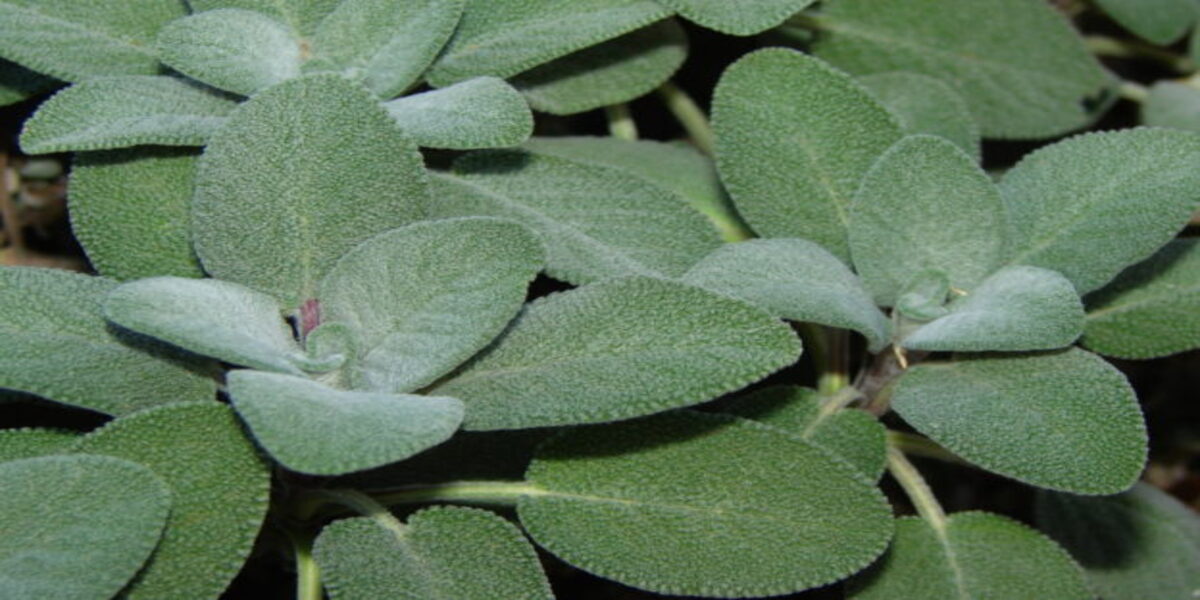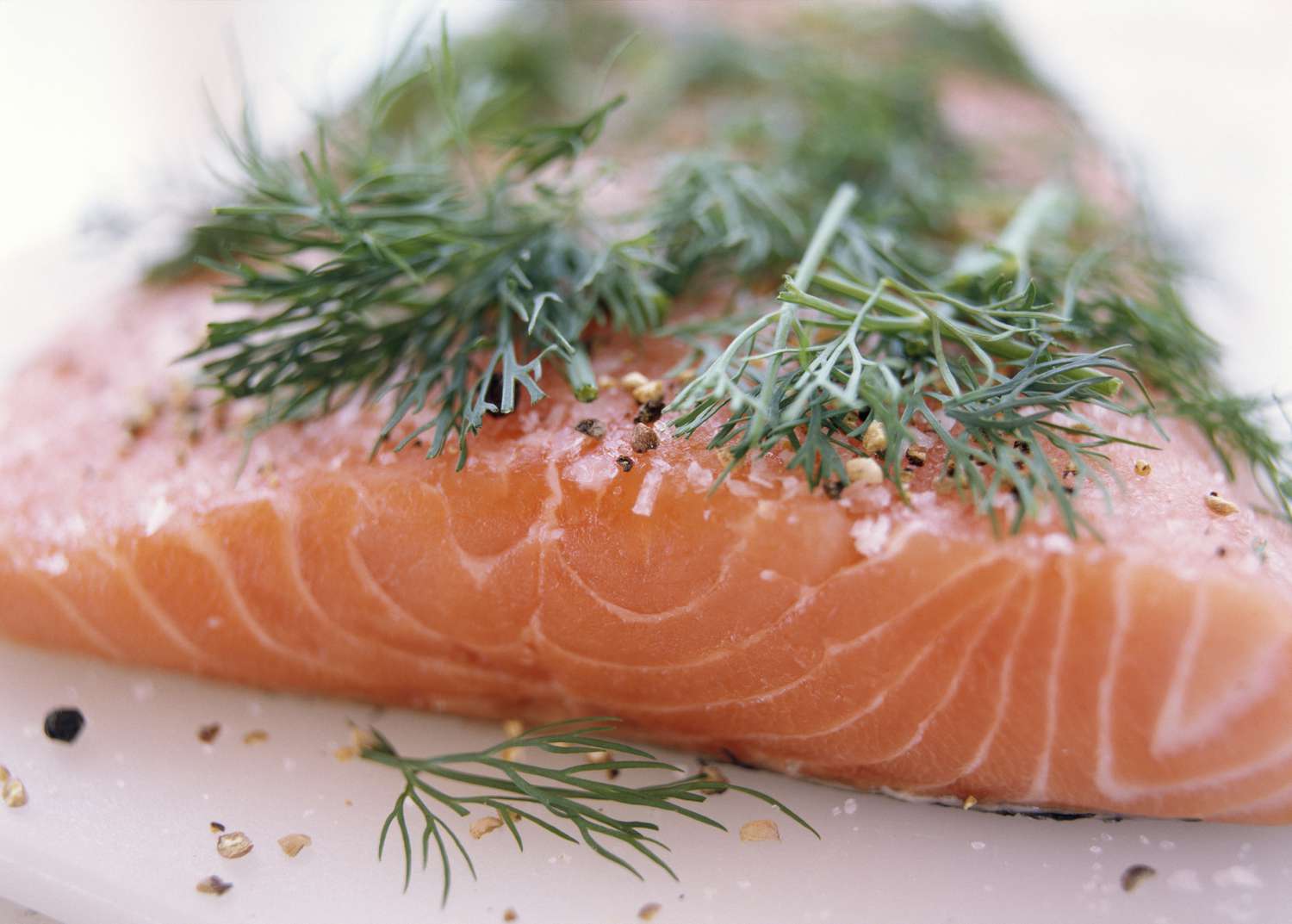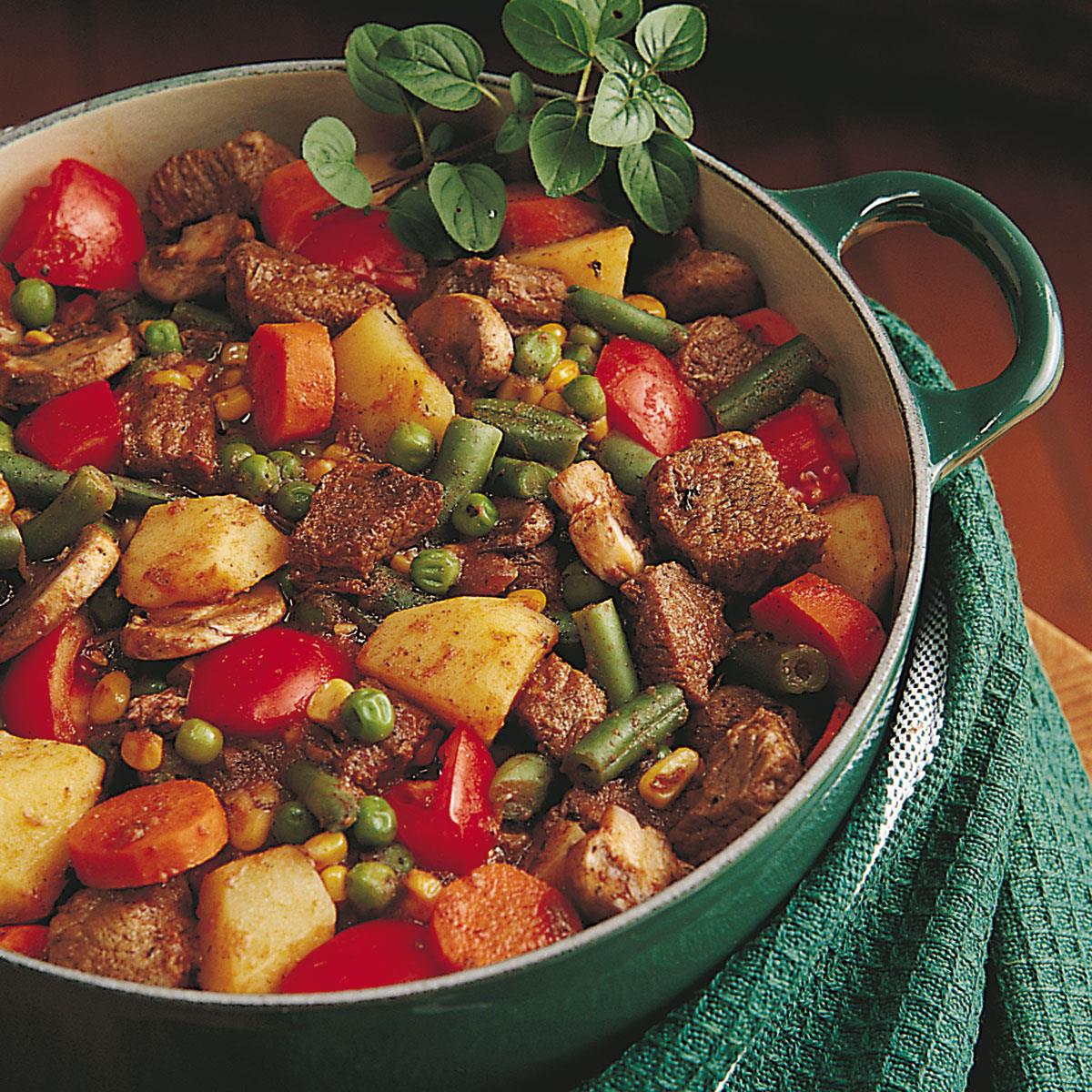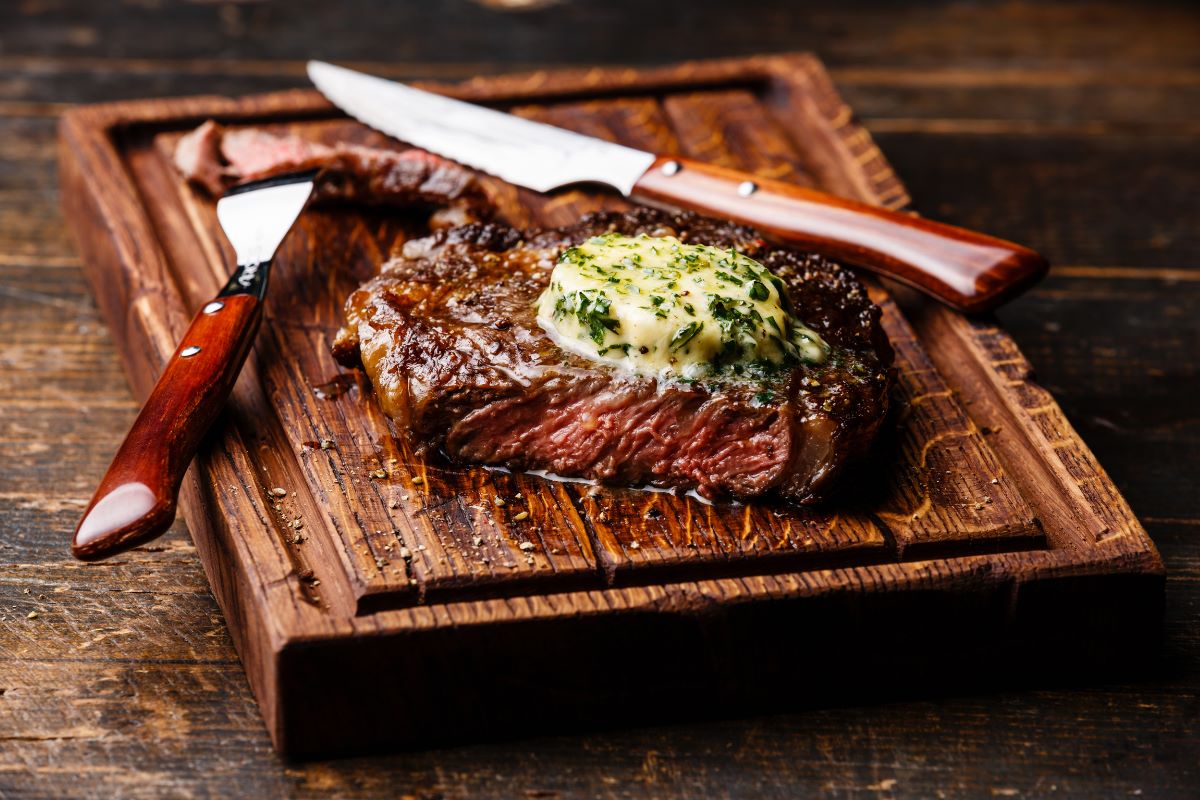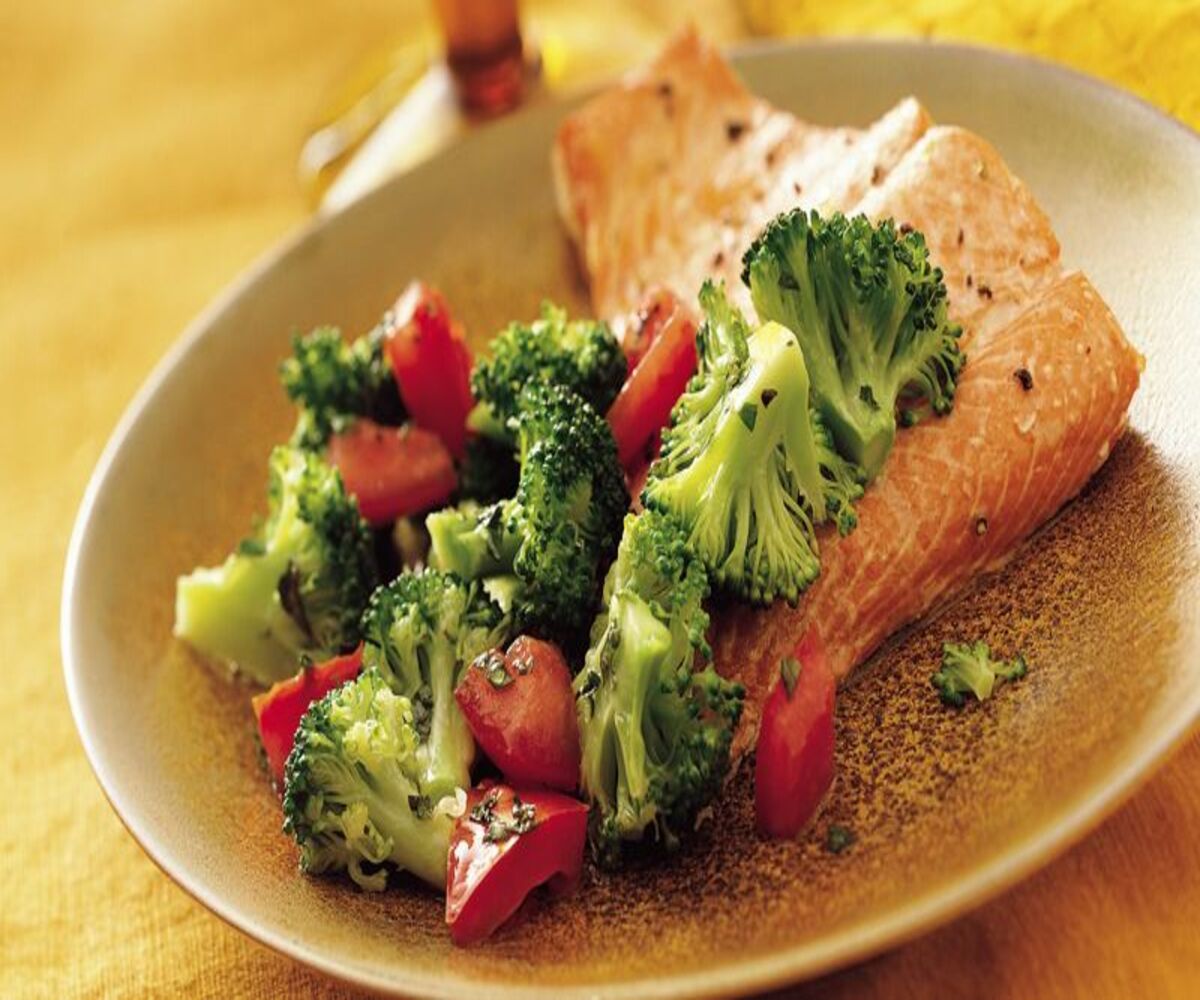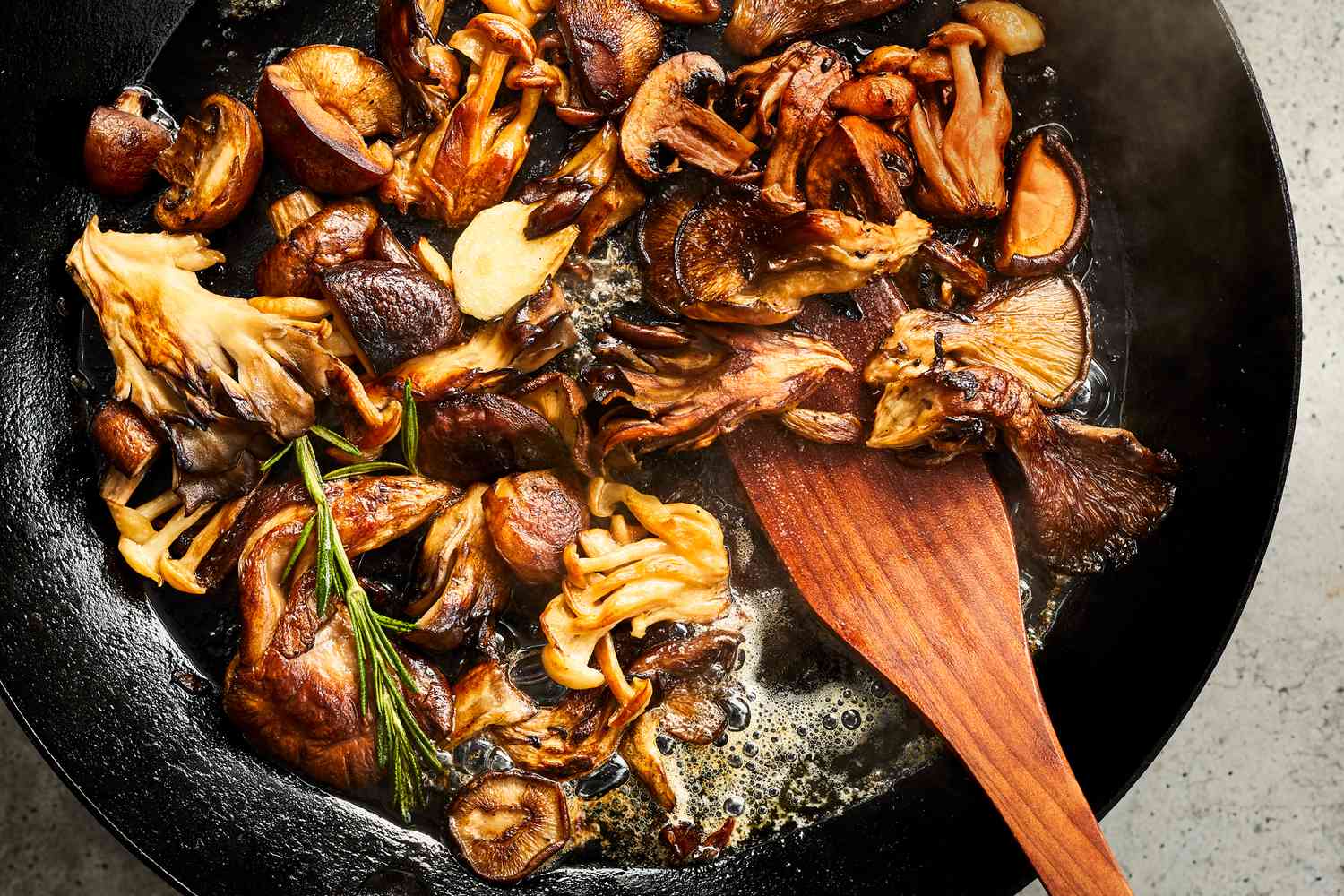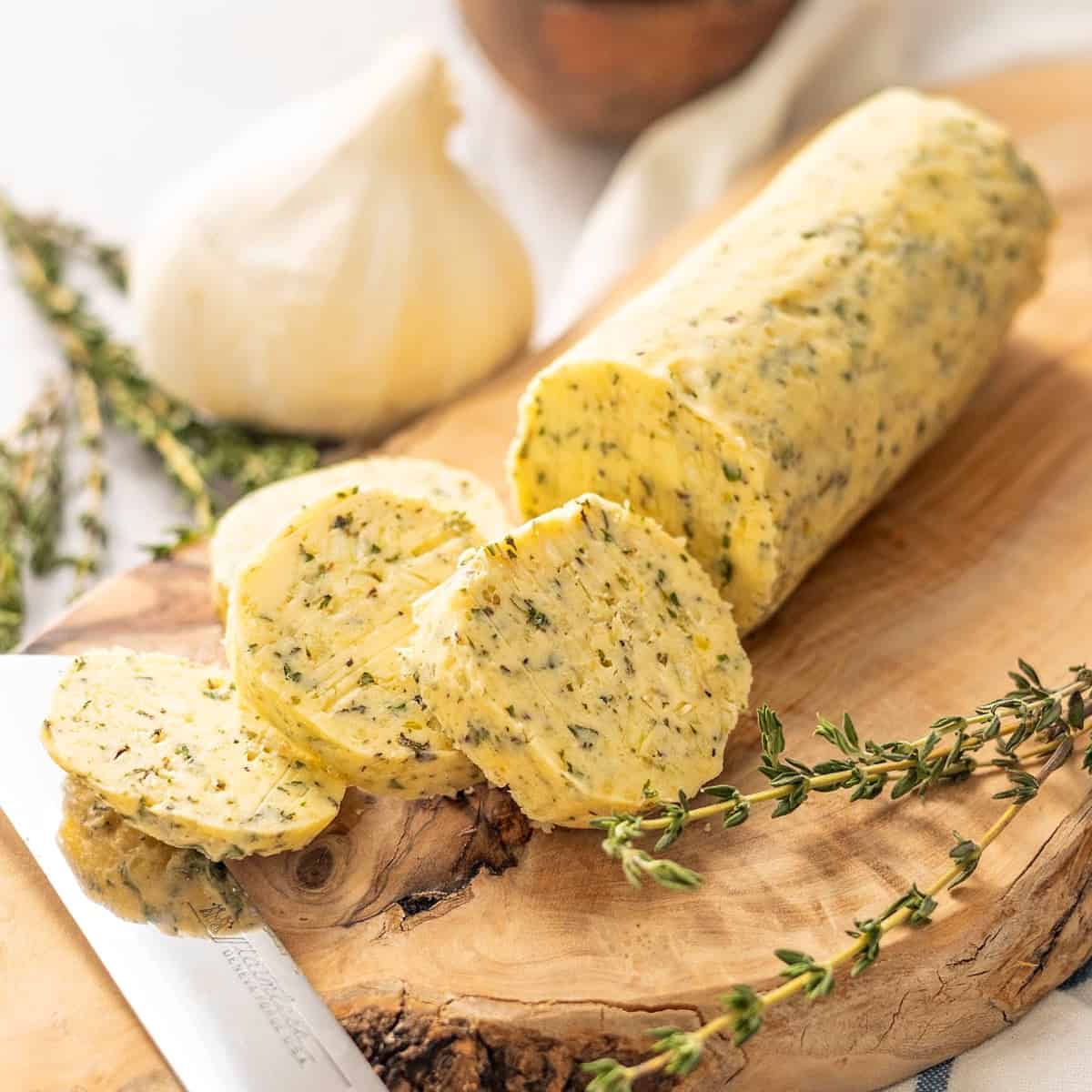Home>Gardening News and Trends>Gardening Trends>What Herbs Go With Cheddar Cheese


Gardening Trends
What Herbs Go With Cheddar Cheese
Modified: January 22, 2024
Discover the latest gardening trends and learn about the perfect herbs to pair with cheddar cheese for a delicious culinary experience.
(Many of the links in this article redirect to a specific reviewed product. Your purchase of these products through affiliate links helps to generate commission for Chicagolandgardening.com, at no extra cost. Learn more)
Table of Contents
Introduction
Welcome to the world of gardening trends, where plants and design come together to create stunning outdoor spaces. Whether you have a sprawling backyard or a humble balcony, gardening allows you to express your creativity and connect with nature. In recent years, gardening has seen a surge in popularity as people seek solace and relaxation in their own green oasis. From urban gardening to sustainable practices, the world of gardening is ever-evolving and there are always new trends to explore.
Gardening trends not only encompass the type of plants you choose to grow but also the way you design and maintain your garden. From container gardening to vertical gardens, there are countless ways to make the most of your space. Additionally, the use of organic practices and eco-friendly materials has become a major trend, as more people recognize the importance of environmental sustainability.
Another significant trend in gardening is the fusion of beauty and functionality. Many gardeners are now incorporating edible plants into their landscapes, creating a visually appealing space that also provides fresh produce. This trend has given rise to the concept of “foodscaping” or “edible landscaping,” where fruits, vegetables, and herbs are seamlessly integrated into the overall garden design.
As gardening trends continue to evolve, it’s important to stay informed and inspired. Whether you’re a seasoned gardener or just starting out, exploring the latest trends can help you create a garden that reflects your personal style and enhances your outdoor living experience. In this article, we will delve into some of the most popular gardening trends and provide insights on how you can incorporate them into your own green space.
Herb Pairings for Cheddar Cheese
Cheddar cheese is a versatile and beloved cheese that pairs well with a variety of flavors. If you’re a cheese lover looking to enhance the taste of your cheddar, incorporating herbs is a great way to elevate its flavor profile. The right herbs can complement and bring out the best in cheddar cheese, creating a harmonious balance of flavors. Here are some herb pairings that work exceptionally well with cheddar cheese:
- Parsley: The fresh and vibrant flavor of parsley adds a burst of freshness to cheddar cheese. Whether sprinkled on top or mixed into a dish, parsley can provide a refreshing contrast to the rich and tangy taste of cheddar.
- Rosemary: With its distinct pine-like aroma, rosemary brings an earthy and aromatic note to cheddar cheese. Whether used as a garnish or infused into oils, rosemary can elevate the flavor of cheddar and add a touch of sophistication.
- Thyme: Thyme is a herb with a subtle and slightly minty flavor that pairs beautifully with cheddar cheese. Whether used fresh or dried, thyme can enhance the savory and nutty notes of cheddar, creating a delightful combination.
- Oregano: Oregano brings a robust and slightly peppery flavor to cheddar cheese. Whether sprinkled on top of a salad with cheddar or incorporated into a cheesy pasta dish, oregano can add depth and complexity to the overall taste.
- Sage: Sage has a distinct and fragrant flavor that pairs exceptionally well with the creamy and tangy nature of cheddar cheese. Whether used fresh or dried, sage can lend a savory and slightly earthy note to cheddar, creating a delicious combination.
- Basil: The sweet and aromatic flavor of basil can add a wonderful contrast to the sharpness of cheddar cheese. Whether used in a caprese salad or incorporated into a cheesy dip, basil can bring a fresh and herbaceous element to the overall taste.
- Chives: Chives provide a delicate and onion-like flavor that pairs beautifully with cheddar cheese. Whether used as a garnish or mixed into a cheesy quiche, chives can add a subtle hint of oniony goodness to the creaminess of cheddar.
- Dill: Known for its distinctive flavor, dill can bring a unique twist to the taste of cheddar cheese. Whether used in a creamy dill sauce or sprinkled over a cheesy potato dish, dill can provide a refreshing and slightly tangy note to the overall flavor profile.
- Tarragon: Tarragon has a mild anise-like flavor that can complement the richness of cheddar cheese. Whether used in a creamy salad dressing or infused into butter to spread on cheddar cheese, tarragon can add a subtle hint of sweetness and depth.
- Marjoram: Marjoram has a delicate and slightly floral flavor that pairs harmoniously with cheddar cheese. Whether used in a cheesy marinade or blended into a creamy sauce, marjoram can enhance the overall taste and create a delightful combination.
Experimenting with different herb pairings can be a fun and delicious way to elevate your cheddar cheese experience. Whether you’re enjoying a cheese platter, making a grilled cheese sandwich, or incorporating cheddar into your favorite recipes, don’t be afraid to get creative and explore the wonderful world of herb and cheese combinations.
Parsley
Parsley is a versatile herb that adds a burst of freshness to any dish, making it an excellent pairing for cheddar cheese. With its vibrant green color and mild yet distinctive flavor, parsley can enhance the taste and visual appeal of cheddar cheese-based dishes. Whether used as a garnish or incorporated into the recipe, parsley brings a delightful touch to the overall flavor profile.
When paired with cheddar cheese, parsley can provide a refreshing contrast to the rich and tangy taste. Its subtle earthy notes complement the creaminess of cheddar, creating a harmonious balance of flavors. Whether sprinkled on top of a cheesy casserole, mixed into a cheesy dip, or incorporated into a cheddar-stuffed mushroom, parsley’s freshness can brighten up the dish and add a delightful dimension to the taste.
In addition to its flavor-enhancing properties, parsley also offers various health benefits. Rich in vitamins A, C, and K, as well as antioxidants, parsley can contribute to a well-balanced and nutritious meal. It also contains essential minerals like potassium and calcium. Adding parsley to your cheddar cheese recipes not only enhances the taste but also adds a nutritional boost to your dish.
Parsley is a widely available herb that can be easily grown in your own garden or purchased from a grocery store. To use parsley in your cheddar cheese dishes, simply chop the leaves finely and sprinkle them as a garnish. You can also incorporate parsley into cheese-based sauces, salad dressings, or mixed into dips for a fresh and vibrant flavor.
Next time you’re enjoying a cheddar cheese dish, consider adding a touch of parsley for that extra burst of freshness. Whether you’re making a cheesy pasta, a savory pie, or even a grilled cheese sandwich, parsley can elevate the overall taste and take your cheddar cheese experience to the next level.
Rosemary
Rosemary is a versatile herb with a distinct and aromatic flavor that pairs exceptionally well with cheddar cheese. Known for its pine-like aroma and earthy taste, rosemary brings a unique and delightful twist to the richness of cheddar. Whether used as a garnish or infused into oils, rosemary can enhance the flavor profile of cheddar cheese-based dishes.
When paired with cheddar cheese, rosemary adds depth and complexity to the overall taste. Its herbaceous and slightly woody notes complement the tanginess of cheddar, creating a harmonious balance. Whether sprinkled on top of a cheesy bread, incorporated into a cheddar-stuffed chicken, or infused into a cheesy dip, rosemary can elevate the flavor and bring a touch of sophistication to your dish.
One of the benefits of using rosemary in cheddar cheese recipes is its versatility. It can be used in both fresh and dried forms, depending on your preference and availability. Fresh rosemary leaves have a more intense flavor, while dried rosemary offers a more subtle and concentrated taste. Both forms can be used effectively to complement the flavor of cheddar cheese.
In addition to its flavor-enhancing properties, rosemary also offers several health benefits. It is rich in antioxidants and has been linked to improved digestion, enhanced memory function, and reduced inflammation. Incorporating rosemary into your cheddar cheese dishes not only adds a delightful taste but also contributes to your overall well-being.
If you have access to fresh rosemary, you can simply chop the leaves and sprinkle them as a garnish on cheddar cheese-based dishes. You can also infuse rosemary into oils to drizzle over cheeseboards or use it as a marinade for roasted cheddar-stuffed vegetables. Dried rosemary can be added to cheese-based sauces, bread dough, or sprinkled on top of cheesy casseroles to infuse the dish with its distinct flavor.
Next time you’re enjoying cheddar cheese, consider incorporating rosemary to create a memorable culinary experience. Whether it’s a cheesy pizza, a creamy soup, or a savory tart, the addition of rosemary can elevate the taste and bring a unique twist to your cheddar cheese creations.
Thyme
Thyme is a fragrant herb with a subtle, minty flavor that pairs beautifully with cheddar cheese. Its delicate taste and aroma make it a versatile herb to enhance the flavor profile of cheddar cheese-based dishes. Whether used as a garnish or infused into the recipe, thyme can bring a delightful touch to the overall taste.
When paired with cheddar cheese, thyme adds a layer of depth and complexity. Its earthy and slightly floral notes complement the savory and nutty characteristics of cheddar, creating a harmonious combination. Whether incorporated into a cheesy casserole, sprinkled on top of a grilled cheese sandwich, or infused into a cheddar-stuffed chicken, thyme can take the flavor of cheddar to new heights.
Thyme not only enhances the taste but also provides various health benefits. It is rich in antioxidants and has anti-inflammatory properties, which can contribute to overall well-being. Thyme also contains vitamins C, A, and K, as well as minerals like iron and manganese. Adding thyme to your cheddar cheese recipes not only elevates the flavor but also adds a nutritional boost.
Thyme is readily available at grocery stores and can also be grown in your own herb garden. To use thyme in your cheddar cheese dishes, simply strip the leaves off the stems and chop them finely. Sprinkle the chopped thyme as a garnish or incorporate it into cheese-based sauces, bread dough, or roasted vegetables with cheddar.
Whether you’re enjoying a cheesy pasta, a savory tart, or a hearty soup, adding thyme can enhance the overall taste and bring a unique flavor profile to your cheddar cheese dishes. The subtle minty notes of thyme will beautifully complement the richness of cheddar, creating a memorable culinary experience.
Oregano
Oregano is a flavorful herb that adds a robust and slightly peppery taste to cheddar cheese. Its distinct flavor profile makes it an excellent pairing for cheddar, enhancing the overall taste of cheese-based dishes. Whether used as a seasoning or garnish, oregano can bring depth and complexity to the flavor of cheddar cheese.
When paired with cheddar cheese, oregano adds an extra layer of flavor. Its robust and slightly peppery notes complement the tanginess and creaminess of cheddar, creating a harmonious combination. Whether sprinkled on top of a cheesy pizza, mixed into a marinara sauce, or incorporated into a cheesy pasta dish, oregano can elevate the taste and add a delightful twist to your cheddar cheese creations.
In addition to its flavor-enhancing properties, oregano also offers numerous health benefits. It is rich in antioxidants and has antimicrobial properties that can support overall health and well-being. Oregano contains vitamins A, C, and K, as well as essential minerals like iron and manganese. Adding oregano to your cheddar cheese dishes not only enhances the taste but also provides nutritional value.
Oregano is a common herb found in most spice racks or can be easily grown in your own herb garden. To use oregano in cheddar cheese recipes, you can either use dried or fresh oregano leaves. Dried oregano has a more concentrated flavor, while fresh oregano adds a brighter and more vibrant taste. Simply sprinkle the dried or chopped fresh oregano on top of your cheddar cheese dishes to infuse them with its delicious flavor.
Next time you’re indulging in cheddar cheese, consider incorporating oregano to enhance the overall taste. Whether you’re making a cheesy lasagna, a comforting mac and cheese, or a cheesy bread, the addition of oregano can take your cheddar cheese creations to the next level, providing a delightful burst of flavor.
Sage
Sage is a herb with a distinctive and fragrant flavor that pairs exceptionally well with cheddar cheese. Known for its earthy and slightly peppery taste, sage brings a unique and delightful twist to the richness of cheddar. Whether used as a seasoning or garnish, sage can enhance the flavor profile of cheddar cheese-based dishes.
When paired with cheddar cheese, sage adds depth and complexity to the overall taste. Its herbaceous and slightly savory notes complement the tanginess and creaminess of cheddar, creating a harmonious combination. Whether used in a cheesy stuffing, sprinkled on top of roasted cheddar vegetables, or infused in butter to spread on cheddar cheese, sage can elevate the flavor and bring a touch of sophistication to your dish.
One of the benefits of using sage in cheddar cheese recipes is its versatility. It can be used both fresh and dried, depending on your preference and availability. Fresh sage leaves have a more robust flavor, while dried sage offers a more concentrated taste. Both forms can be used effectively to complement the flavor of cheddar cheese.
In addition to its flavor-enhancing properties, sage also offers several health benefits. It contains powerful antioxidants and has been associated with anti-inflammatory and antimicrobial properties. Sage is also rich in vitamin K, which is important for healthy bones and blood clotting. Incorporating sage into your cheddar cheese dishes not only adds a delightful taste but also contributes to your overall well-being.
If you have access to fresh sage, you can simply chop the leaves and sprinkle them as a garnish on cheddar cheese-based dishes. You can also infuse sage into butter, oils, or sauces to drizzle over cheddar cheese or incorporate it into hearty cheddar cheese-based soups and stews. Dried sage can be added to bread dough, cheese-based sauces, or sprinkled on top of cheesy casseroles to infuse the dish with its distinct flavor.
Next time you’re enjoying cheddar cheese, consider incorporating sage to create a memorable culinary experience. Whether it’s a cheesy risotto, a creamy pasta, or a savory cheese dip, the addition of sage can elevate the taste and bring a unique twist to your cheddar cheese dishes.
Basil
Basil is a versatile herb with a sweet and aromatic flavor that pairs beautifully with cheddar cheese. Known for its fresh and herbaceous taste, basil can enhance the flavor profile of cheddar cheese-based dishes, adding a delightful twist to the richness of the cheese. Whether used as a garnish or incorporated into the recipe, basil can elevate the taste of cheddar cheese.
When paired with cheddar cheese, basil brings a refreshing contrast to the sharpness and tanginess of the cheese. Its sweet and aromatic notes complement the creaminess of cheddar, creating a delightful combination. Whether used in a caprese salad with cheddar, incorporated into a juicy burger, or blended into a cheesy pesto sauce, basil can add a fresh and herbaceous element to the overall taste.
In addition to its flavor-enhancing properties, basil also offers various health benefits. It is rich in antioxidants and has anti-inflammatory properties. Basil also contains essential oils that have been linked to potential health benefits, including fighting bacteria and reducing inflammation. Adding basil to your cheddar cheese dishes not only enhances the taste but also provides a nutritional boost.
Basil is widely available and can be grown in your own herb garden or purchased from grocery stores. To use basil in your cheddar cheese recipes, simply tear the leaves or chop them finely depending on your preference. Sprinkle basil as a garnish or incorporate it into cheese-based sauces, pizzas, sandwiches, or even infused into oils for a burst of fresh flavor.
Next time you’re enjoying cheddar cheese, consider incorporating basil to elevate the overall taste. Whether it’s a cheesy pasta, a creamy tomato soup, or a flavorful bruschetta, the addition of basil can bring a delightful freshness and aromatic quality to your cheddar cheese dishes.
Chives
Chives are a delicate and flavorful herb that pairs wonderfully with cheddar cheese. With their mild onion-like flavor, chives can add a subtle and refreshing hint to the rich and tangy taste of cheddar. Whether used as a garnish or incorporated into the recipe, chives can enhance the flavor profile of cheddar cheese-based dishes.
When paired with cheddar cheese, chives provide a delightful balance. Their mild onion flavor complements the creamy and tangy nature of cheddar, creating a harmonious combination. Whether sprinkled on top of a cheesy baked potato, mixed into a cheesy quiche, or incorporated into a cheddar-stuffed omelet, chives can add a touch of freshness and complexity to your dish.
In addition to their flavor-enhancing properties, chives also offer some health benefits. They are rich in vitamins A and C, as well as minerals like potassium and calcium. Chives are also known to have antibacterial properties and can aid digestion. Incorporating chives into your cheddar cheese dishes not only adds a delightful taste but also provides nutritional value.
Chives are readily available and can be easily grown in your own herb garden or purchased from grocery stores. To use chives in your cheddar cheese recipes, simply chop them finely and sprinkle them as a garnish. You can also incorporate chives into cheese-based sauces, mixed into cream cheese spreads or mixed with butter to spread on cheddar cheese-based bread.
The next time you’re enjoying a dish with cheddar cheese, consider adding chives to enhance the taste. Whether it’s a cheesy dip, a savory tart, or a classic grilled cheese sandwich, the addition of chives can bring a fresh and flavorful element to your cheddar cheese creations.
Dill
Dill is a versatile herb with a distinct flavor that pairs exceptionally well with cheddar cheese. Known for its fresh, tangy, and slightly sweet taste, dill can enhance the flavor profile of cheddar cheese-based dishes, adding a delightful twist to the richness of the cheese. Whether used as a seasoning or garnish, dill can elevate the taste of cheddar cheese.
When paired with cheddar cheese, dill adds depth and complexity to the overall taste. Its unique flavor profile complements the tanginess and creaminess of cheddar, creating a harmonious combination. Whether used in a creamy dill sauce, sprinkled on top of a cheesy potato dish, or incorporated into a cheddar-stuffed salmon, dill can take the flavor of cheddar to new heights.
In addition to its flavor-enhancing properties, dill also offers various health benefits. It is rich in vitamins A, C, and K, as well as minerals like calcium and manganese. Dill also contains powerful antioxidants and has been linked to potential health benefits such as reducing inflammation and aiding digestion. Incorporating dill into your cheddar cheese dishes not only enhances the taste but also provides nutritional value.
Dill can be easily sourced from grocery stores or grown in your own herb garden. To use dill in your cheddar cheese recipes, simply chop the leaves finely and sprinkle them as a garnish or incorporate them into cheese-based sauces, dips, or dressings. Dill can also be infused into oils or vinegars to drizzle over cheeseboards or added to cheesy bread dough for an extra burst of flavor.
Next time you’re enjoying cheddar cheese, consider adding some dill to elevate the overall taste. Whether it’s a cheesy pasta salad, a savory quiche, or a creamy dip, the addition of dill can bring a refreshing and tangy element to your cheddar cheese dishes, creating a truly delicious experience.
Tarragon
Tarragon is a versatile herb with a unique flavor that pairs beautifully with cheddar cheese. Known for its mild anise-like taste, tarragon adds a delightful and slightly sweet twist to the rich and tangy nature of cheddar. Whether used as a seasoning or garnish, tarragon can enhance the flavor profile of cheddar cheese-based dishes.
When paired with cheddar cheese, tarragon brings depth and complexity to the overall taste. Its subtle and slightly sweet notes complement the creaminess of cheddar, creating a harmonious combination. Whether incorporated into a creamy salad dressing, infused into butter to spread on cheddar cheese-based bread, or added to a cheddar-stuffed chicken, tarragon can elevate the flavor and bring a touch of sophistication to your dish.
Tarragon not only enhances the taste but also offers several health benefits. It is rich in antioxidants, vitamins, and minerals, including vitamin C, vitamin A, and iron. Tarragon has been associated with potential health benefits such as improved digestion, reduced inflammation, and improved heart health. Adding tarragon to your cheddar cheese dishes not only adds a delightful taste but also provides nutritional value.
Tarragon can be easily found at grocery stores or grown in your own herb garden. To use tarragon in your cheddar cheese recipes, chop the leaves finely and sprinkle them as a garnish or incorporate them into cheese-based sauces, creamy dips, or dressings. Tarragon can also be used to infuse oils or vinegar, which can be drizzled over cheddar cheese or used to enhance the flavor of cheese-based dishes.
The next time you’re enjoying cheddar cheese, consider adding tarragon to elevate the overall taste. Whether it’s a cheesy salad, a creamy pasta dish, or a savory quiche, the addition of tarragon can bring a unique and sophisticated flavor to your cheddar cheese creations.
Marjoram
Marjoram is a delicate herb with a mild and slightly floral flavor that pairs harmoniously with cheddar cheese. Known for its sweet and aromatic notes, marjoram can enhance the flavor profile of cheddar cheese-based dishes, adding a delightful twist to the richness of the cheese. Whether used as a seasoning or garnish, marjoram can elevate the taste of cheddar cheese.
When paired with cheddar cheese, marjoram brings a subtle and fragrant layer of flavor. Its mild and slightly floral notes complement the tanginess and creaminess of cheddar, creating a harmonious combination. Whether incorporated into a cheesy marinade, blended into a creamy sauce, or sprinkled on top of a cheesy pizza, marjoram can enhance the overall taste and add a delightful touch to your cheddar cheese dishes.
In addition to its flavor-enhancing properties, marjoram also offers various health benefits. It contains antioxidants and has been associated with potential anti-inflammatory and antimicrobial properties. Marjoram also contains vitamins A, C, and K, as well as minerals like calcium and iron. Incorporating marjoram into your cheddar cheese dishes not only enhances the taste but also provides a nutritional boost.
Marjoram can be easily sourced from grocery stores or grown in your own herb garden. To use marjoram in your cheddar cheese recipes, simply chop the leaves finely and sprinkle them as a garnish or incorporate them into cheese-based sauces, dressings, or mixed into creamy dips. Marjoram can also be used to infuse oils or vinegar to drizzle over cheddar cheese or used as a marinade for cheese-based dishes.
Next time you’re enjoying cheddar cheese, consider adding marjoram to elevate the overall taste. Whether it’s a cheesy pasta, a creamy risotto, or a flavorful dip, the addition of marjoram can bring a unique and delightful flavor to your cheddar cheese dishes, creating a memorable culinary experience.
Conclusion
Exploring different herb pairings for cheddar cheese can be an exciting journey to enhance your culinary experience. Each herb brings its unique flavor profile, contributing to a harmonious balance when paired with the creamy and tangy nature of cheddar cheese. From the freshness of parsley to the earthiness of rosemary, the versatility of basil to the mild onion notes of chives, each herb adds its delightful touch to elevate the taste of cheddar cheese.
Not only do these herbs enhance the flavor, but they also offer various health benefits. Many herbs are rich in antioxidants, vitamins, and minerals, providing an additional nutritional boost to your cheddar cheese dishes. Incorporating these herbs into your recipes can support overall well-being while adding layers of complexity to your dishes.
Whether you’re making a cheesy pasta, a savory quiche, or a grilled cheese sandwich, experimenting with herb pairings can take your cheddar cheese creations to new heights. Sprinkle fresh herbs as a garnish to add a burst of freshness or incorporate dried herbs into your recipes for a more concentrated flavor. The choice is yours, and there are endless opportunities to create delightful combinations.
Remember, gardening trends are not just about what’s aesthetically pleasing, but also about incorporating flavors and functionality into your green space. By exploring different herb pairings, you can transform your cheddar cheese dishes into culinary masterpieces, impressing your family and friends with your creativity and expertise.
So, get ready to embark on a flavorful journey and explore the wonderful world of herb pairings for cheddar cheese. Let your taste buds guide you as you experiment with different combinations and discover the perfect herb pairings that will tantalize your senses and elevate your cheddar cheese experience.

